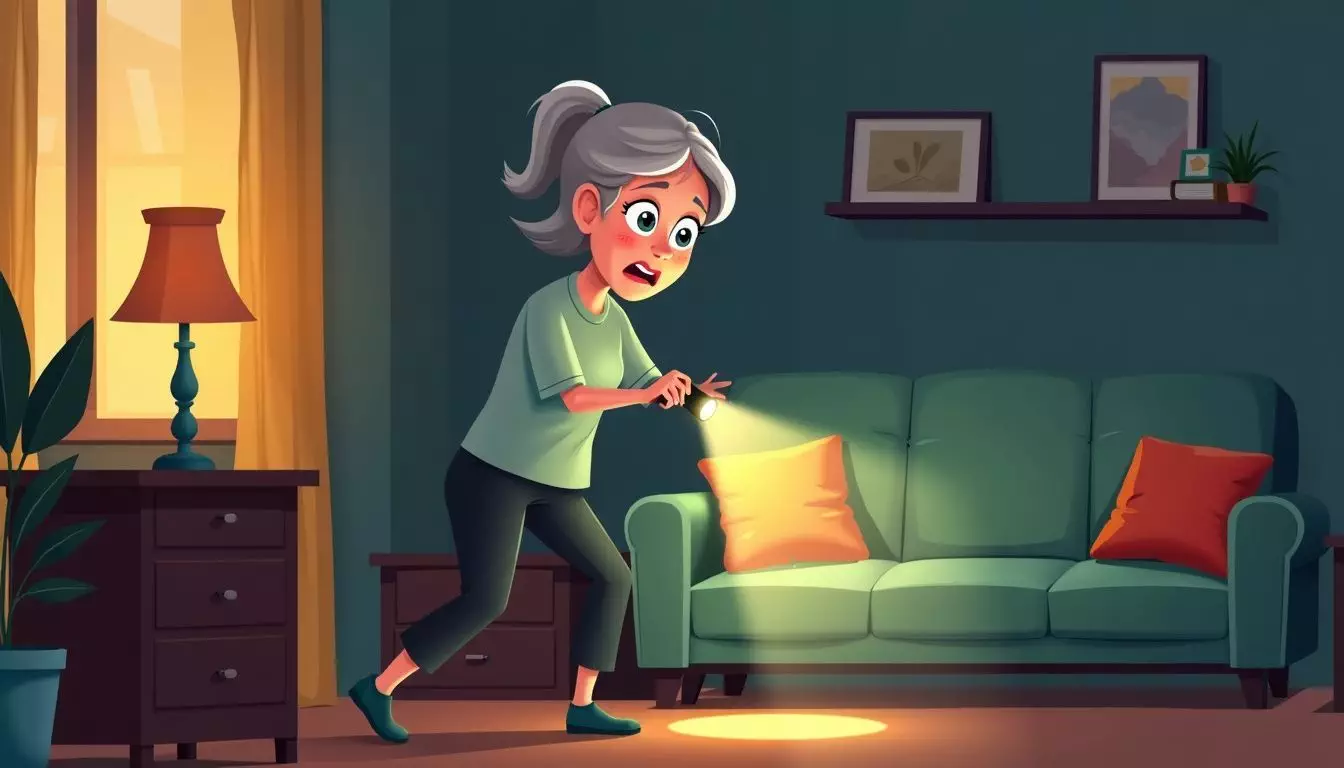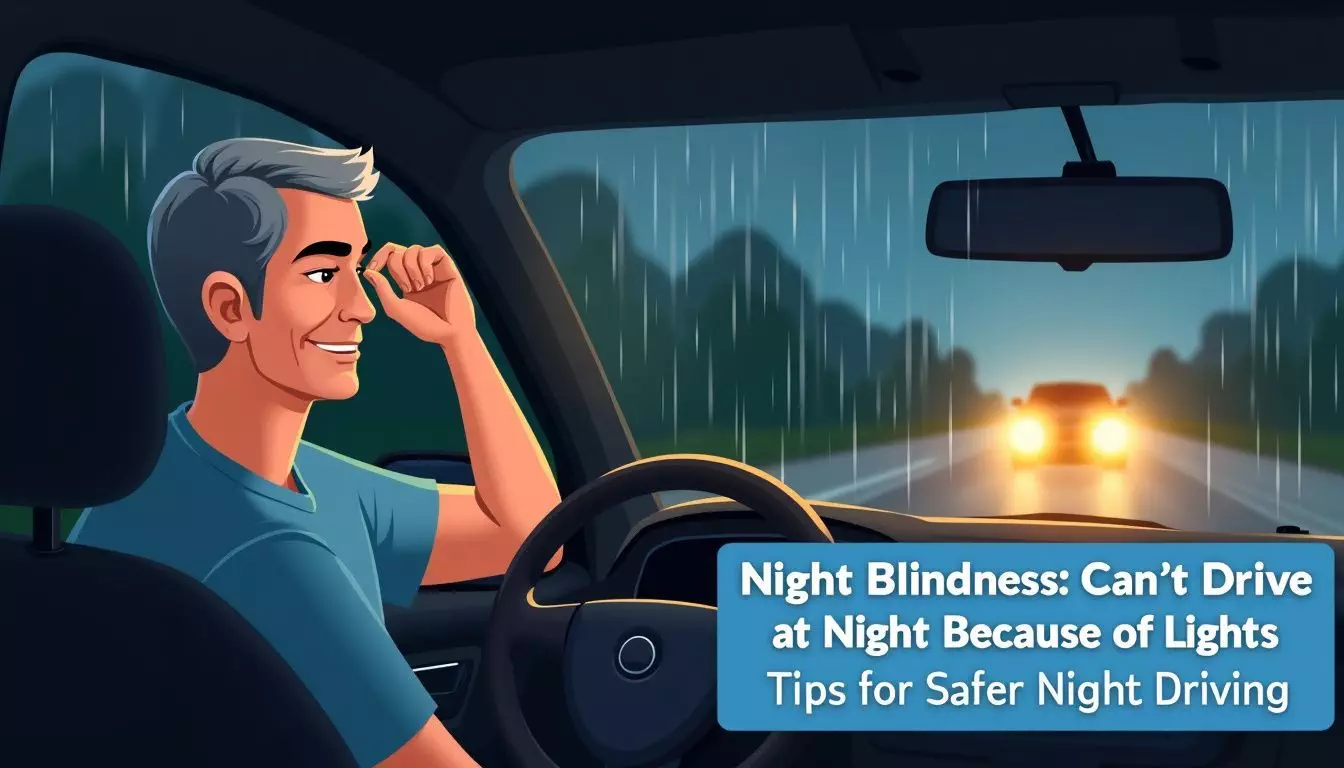Night Blindness: Can’t Drive at Night Because of Lights – Tips for Safer Night Driving
Difficulty driving at night due to bright lights? You’re not alone. Night blindness affects many drivers, making it challenging to see in low-light conditions. This common issue can turn a simple evening drive into a stressful experience. 2 Fortunately, there are ways to improve your night vision and drive safely after dark. One way to improve night vision is to ensure that your headlights are properly aligned and not aiming too high, which can cause glare for oncoming drivers. Additionally, choosing headlights with a lower color temperature can help reduce the harshness of bright lights, making it easier to see at night. A color temperature comparison can help you determine which headlights are best for driving in low-light conditions.
As a seasoned DIY expert at Vocca Light, I’ve helped numerous homeowners tackle various projects, including improving visibility for nighttime driving. I’ll share practical tips to help you see better and feel more confident behind the wheel after sunset.
Prepare to learn how to make your nightly commute safer and more manageable.
Key Takeaways
- Night blindness makes driving after dark hard. It can be caused by cataracts, lack of vitamin A, or genetic eye problems.
- Cataracts affect 31% of people over 65 in the U.S. Half of those with cataracts say it hurts their driving.
- To drive safer at night, adjust your mirrors and headlights, use glasses with anti-glare coating, and don’t look right at bright lights.
- Clean your windshield and headlights often. This helps you see better when driving in the dark.
- If you have trouble seeing at night, see an eye doctor. They can check for eye problems and help you find ways to drive safer.
Common Causes of Night Blindness

Night blindness can stem from various eye issues. Your eyes might struggle in low light due to cataracts, lack of vitamin A, or genetic conditions.
CataractsCataracts cloud your eye’s lens, making night driving tough. 2 They affect 31% of folks over 65 in the U.S. 1 Half of cataract patients say it hurts their driving. 1 The condition cuts down contrast, so lights blur and glare more at night.
Cataracts are like looking through a foggy windshield.
Your eyes struggle to focus, and bright headlights become a big problem. 2 Surgery can fix cataracts, clearing up your vision. If you’re having trouble seeing at night, talk to your eye doctor about getting checked for cataracts.
Vitamin A DeficiencyVitamin A deficiency can mess with your night vision. Your body needs this nutrient to make a key part of your eyes work right. People who’ve had stomach surgery might not absorb enough vitamin A.
This can make it hard to see in low light. 3 You can fix this by eating more foods rich in vitamin A. Try carrots, sweet potatoes, and orange squash. These foods pack a punch of this vital nutrient.
Eating them often helps keep your eyes healthy and your night vision sharp. 4 Next, let’s look at another eye issue that can affect your night driving.
Retinitis Pigmentosa
Retinitis pigmentosa (RP) is a genetic eye disorder that affects your night vision. It damages your retina, the part of your eye that senses light. RP starts with trouble seeing in dim light.
Over time, it can shrink your side vision. This makes night driving hard. You might see halos around lights or have trouble with glare from headlights. 5
RP has no cure yet, but there are ways to manage it. Special glasses can help reduce glare. You can also use night vision aids. Regular eye check-ups are important to track your vision changes.
Your eye doctor might suggest vitamin A supplements to slow RP’s progress. Early detection helps manage RP more effectively. 3
Practical Tips for Safer Night Driving
Night driving can be tricky, but there are ways to make it safer. Here are some tips to help you see better and stay safe on the road after dark.
Adjusting Mirrors and Headlights
Proper mirror and headlight adjustments boost night driving safety. You can make these changes easily at home.
- Check headlight aim: Park 25 feet from a wall. Turn on low beams. Adjust each light to shine 2 inches below the center. 6
- Clean headlights: Wipe lenses with a soft cloth. Use a headlight restoration kit for cloudy lenses to improve brightness. 6
- Align side mirrors: Sit in the driver’s seat. Set mirrors so you can’t see your car’s sides. This cuts blind spots.
- Position rearview mirror: Center it to see straight back. Tilt it down slightly to reduce glare from cars behind you.
- Use night mode: Flip the tab under your rearview mirror. This dims bright lights from trailing vehicles.
- Test adjustments: Drive at night in a safe area. Make sure you can see clearly without blinding others.
- Regular checks: Look at your mirrors and headlights monthly. Clean them and fix any issues you spot. 7
Using Anti-Reflective Coating on Glasses
Anti-reflective (AR) coatings on glasses can make night driving safer. These coatings cut glare and boost your vision in low light.
- Get AR-coated lenses: They let more light pass through, making it easier to see at night. 8
- Reduce halos: AR coatings minimize the rings of light you might see around streetlamps or headlights.
- Lessen eye strain: With less glare, your eyes won’t have to work as hard to focus while driving.
- Improve contrast: AR coatings help you see road signs and lane markings more clearly.
- Choose the right frames: Pick glasses that fit well and don’t block your side vision.
- Clean your lenses often: Keep your AR-coated glasses free of smudges for the best results.
- Combine with other features: Pair AR coating with anti-glare mirrors in your car for even better night vision. 7
- Update your prescription: Make sure your glasses are the right strength for your current vision needs.
Avoiding Direct Gaze at Oncoming Lights
Night driving can be tricky when bright lights shine in your eyes. You can stay safe by using these smart tips to handle oncoming headlights.
- Look to the right side of the road: Shift your eyes to the white line on the right edge of the road. This helps you stay in your lane without staring at bright lights.
- Use your peripheral vision: Keep track of other cars without looking straight at them. Your side vision lets you see what’s around you without getting blinded.
- Blink often: Blinking helps clear your eyes and keeps them moist. This can make it easier to see in changing light.
- Slow down: Drive a bit slower when you can’t see well. This gives you more time to react to what’s on the road.
- Keep your windshield clean: A dirty windshield can make glare worse. Clean it inside and out for better night vision.
- Adjust your mirrors: Tilt your mirrors down slightly to reduce glare from cars behind you.
- Get an eye check-up: Regular eye exams can catch problems that make night driving hard. Your eye doctor can help fix these issues.9
- Night time driving can be challenging due to oncoming headlights, particularly for older drivers, leading some to avoid driving after dark. These are some tips to improve visibility at night.10
When to Consult an Eye Specialist
See an eye doctor if you have trouble driving at night. 11 Signs include blurry vision, glare from headlights, or dim road signs. Don’t wait – book an exam if night driving feels unsafe.
Regular check-ups catch eye issues early. 7 Your doctor can test for cataracts, vitamin deficiencies, or retina problems. They’ll suggest fixes like new glasses or treatments to improve your night vision.
Conclusion
Night driving can be safer with the right steps. Clean your windshield and headlights often. Use anti-glare glasses to cut down bright lights. Adjust your mirrors to reduce glare from cars behind you.
If you still struggle, see an eye doctor. They can check for issues and give you the best ways to drive safely at night.
For more information on improving your night driving experience, check out our guide on the best class 2 power supplies for vehicle lighting.
FAQs
1. What is night blindness?
Night blindness makes it hard to see in dim light. It’s tough to drive at night because of bright lights. You might struggle with oncoming traffic glare.
2. How can I tell if I have night blindness?
You may have night blindness if you can’t see clearly at night. Blurred vision, trouble with depth, and light sensitivity are signs. If driving after dark is scary, talk to an eye doctor.
3. What causes night blindness?
Many things can cause poor night vision. Myopia, astigmatism, and glaucoma are common culprits. Sometimes it’s due to vitamin A lack. Other times, it’s from eye diseases like macular degeneration.
4. Can I still drive with night blindness?
Yes, but be careful. Use anti-glare glasses. Keep your windshield clean. Dim dashboard lights. Take breaks to rest your eyes. If it’s too hard, avoid night driving.
5. How can I improve my night vision for driving?
Get your eyes checked. Update your glasses or contacts. Eat foods rich in vitamin A. Use yellow-tinted night driving glasses. Keep your car’s headlights clean and aligned.
6. Are there special glasses for night driving?
Yes, night driving glasses can help. They cut glare from headlights and street lamps. Some have yellow lenses to boost contrast. Ask your eye doctor about the best type for you.
References
- ^ https://www.sciencedirect.com/science/article/abs/pii/S1369847817302401
- ^ https://www.essilor.com/ie-en/blog/your-life-and-your-eyes/cannot-see-when-driving-at-night/
- ^ https://my.clevelandclinic.org/health/symptoms/10118-night-blindness-nyctalopia
- ^ https://www.ncbi.nlm.nih.gov/pmc/articles/PMC11082363/
- ^ https://www.nei.nih.gov/learn-about-eye-health/eye-conditions-and-diseases/retinitis-pigmentosa (2023-11-15)
- ^ https://driving-school.com/tips-for-driving-at-night-staying-safe-and-alert-on-the-road/
- ^ https://www.visionworks.com/article-8-tips-to-see-better-and-drive-safer-at-night
- ^ https://www.pearlevision.com/pv-us/glasses-frames-lenses/night-driving-glasses
- ^ https://www.duckloeyegroup.com/619248-the-challenges-of-night-driving-and-your-vision/
- ^ https://www.aarp.org/auto/driver-safety/driving-in-the-dark/ (2023-10-12)
- ^ https://www.goodrx.com/health-topic/eye/night-blindness







